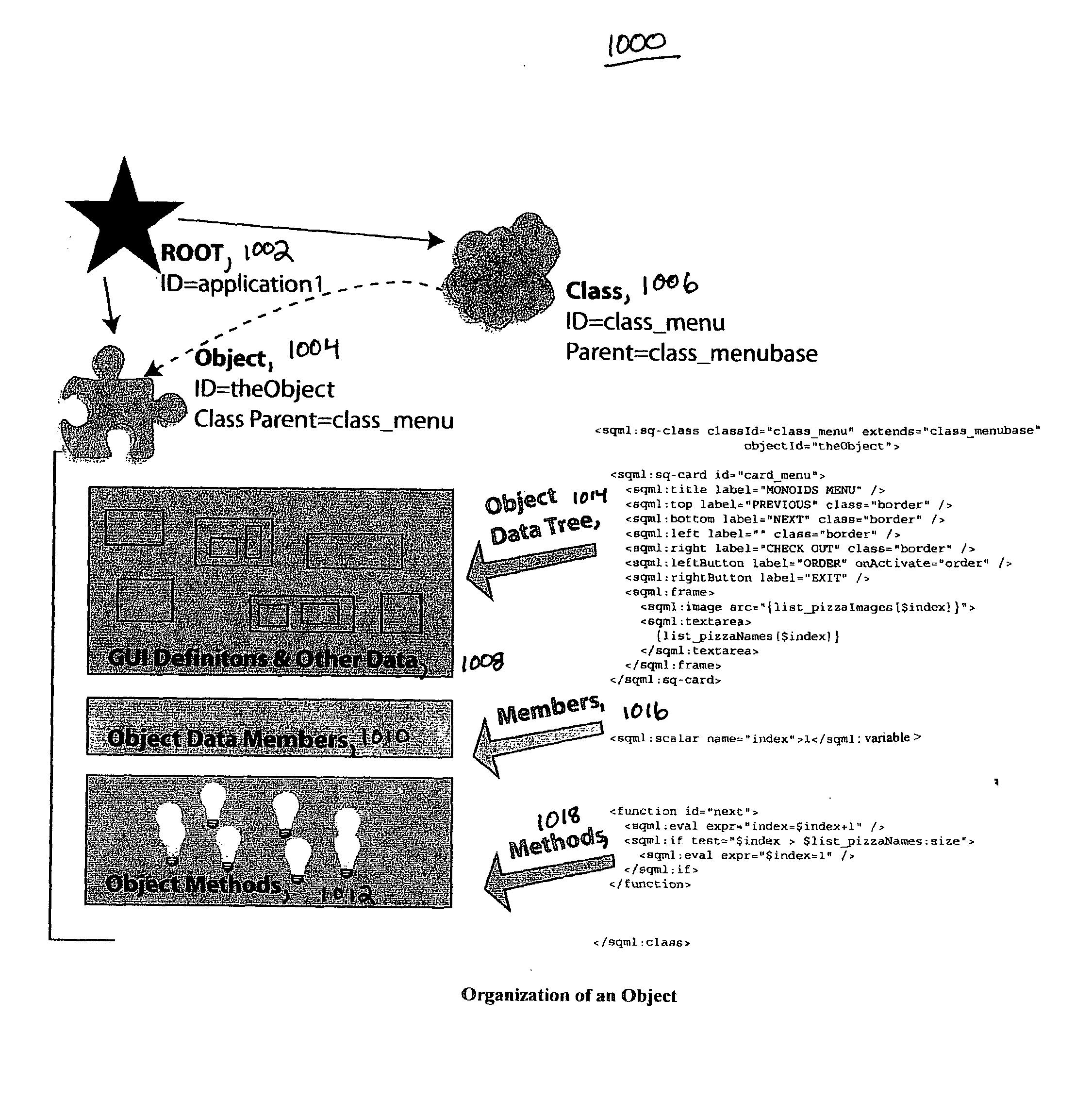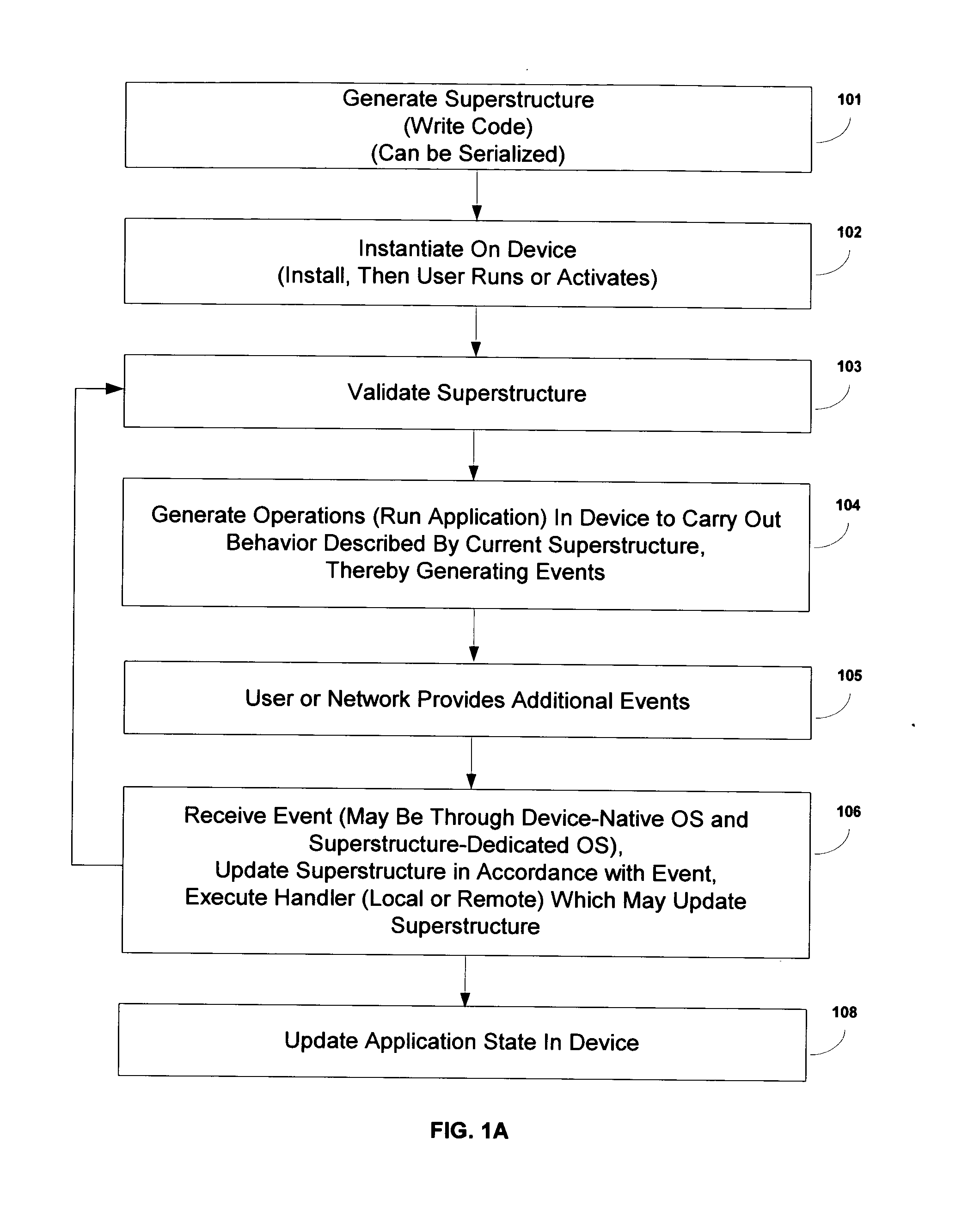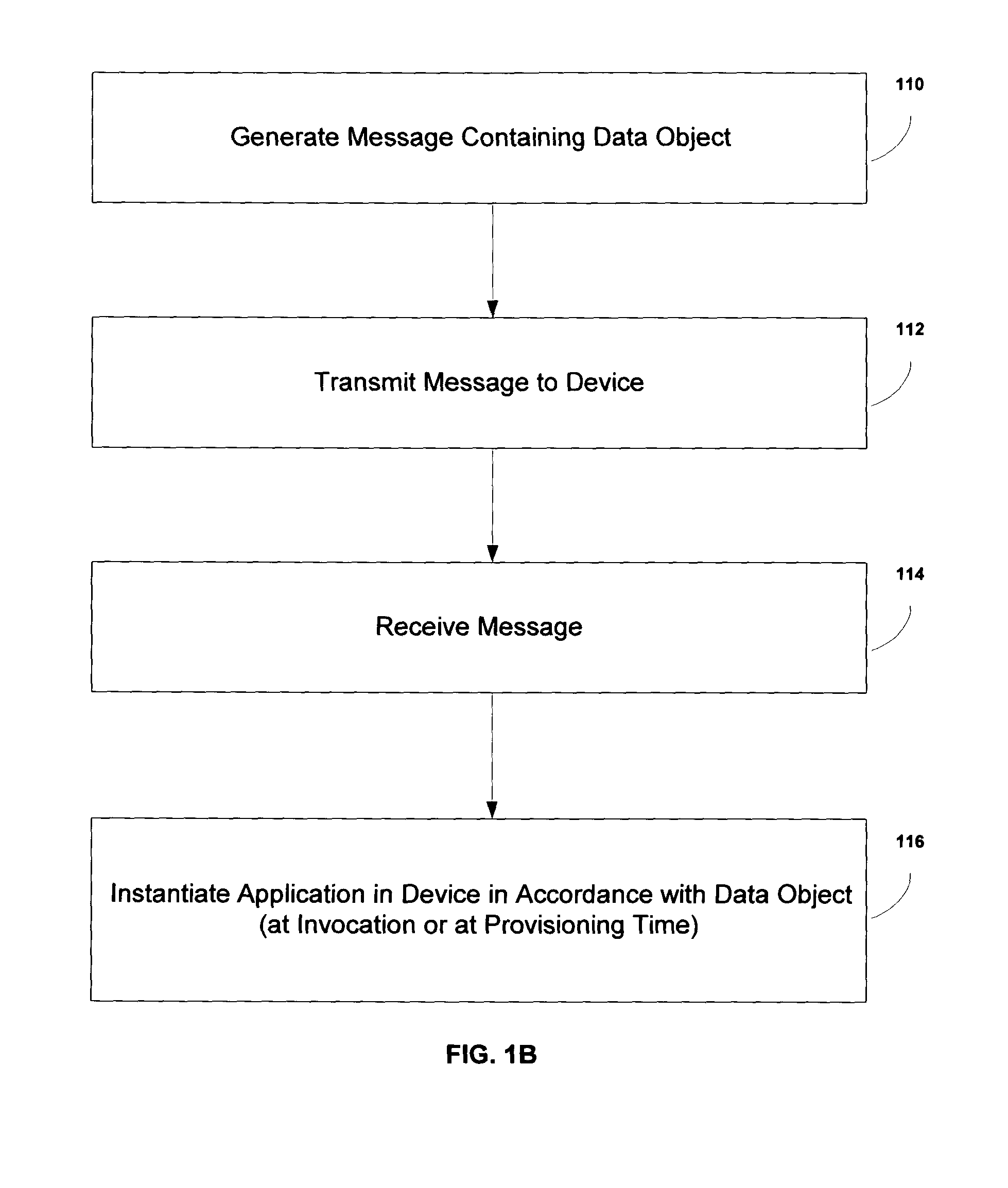User interface, operating system and architecture
a user interface and operating system technology, applied in the field of user interfaces, operating systems and architecture, can solve the problems of fragmentation of the wireless application market, failure to produce common underlying standards, and new breeds of handheld personal computers with unparalleled power, mobility and battery life, etc., to achieve cost-effective design, construction, and deployment.
- Summary
- Abstract
- Description
- Claims
- Application Information
AI Technical Summary
Benefits of technology
Problems solved by technology
Method used
Image
Examples
example static application
[0254]The following sample application demonstrates what a simple application might look like when represented as SQML. (Again, many variations are possible, and the invention does not mandate the structure shown by way of example.) This application presents a simple screen to the user that looks like that shown in FIG. 12.
[0255]The source of the application depicted in FIG. 12 is shown in Table 9. Note that stylesheets are used in this example. Stylesheets are discussed in detail below.
[0256]The basic structure of the application starts with a sqml tag, which represents the root of the superstructure. Below it is defined one object called main, which contains a sq-card definition inside its data tree. The activate tag on the sqml tag causes this card to be initially displayed to the user. See Table 9.
TABLE 9Static SimpleOS Application Example in SQML A simple application without any dynamic handlers Demonstrating controls and cards.--> activate=”main:card00”> ...
PUM
 Login to View More
Login to View More Abstract
Description
Claims
Application Information
 Login to View More
Login to View More - R&D
- Intellectual Property
- Life Sciences
- Materials
- Tech Scout
- Unparalleled Data Quality
- Higher Quality Content
- 60% Fewer Hallucinations
Browse by: Latest US Patents, China's latest patents, Technical Efficacy Thesaurus, Application Domain, Technology Topic, Popular Technical Reports.
© 2025 PatSnap. All rights reserved.Legal|Privacy policy|Modern Slavery Act Transparency Statement|Sitemap|About US| Contact US: help@patsnap.com



